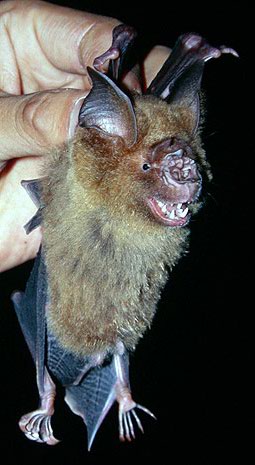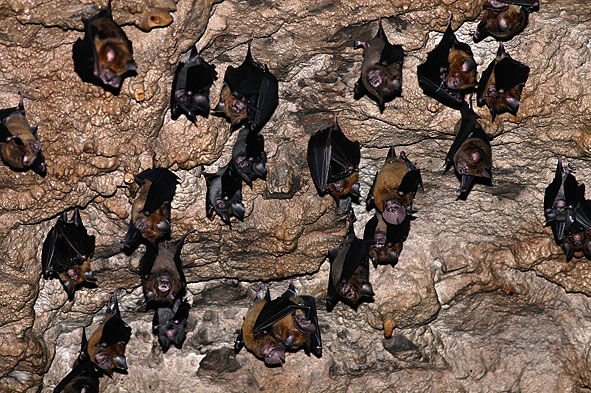Hipposideros pratti
Pratt's Roundleaf Bat
Morphological description Life history Distribution Habitat Roost sites and roosting patterns Emergence and flight pattern Foraging behaviour Echolocation calls Status and protection
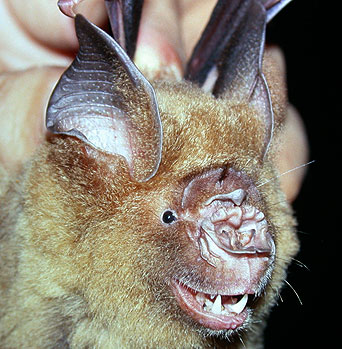
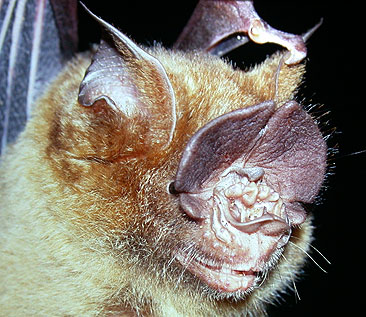
Morphological Description
· Dorsal fur is reddish-brown. Ventral fur is lighter.
· Juveniles are lighter than adults.
· Forearm length 83.4-90.8 mm.
· Body mass 53 - 68.9 g.
· All bats have a transverse bilobed shield behind the posterior noseleaf. In young males and females the shield may be small (bottom left), but in old males it becomes an elaborate fleshy structure (bottom right).
Life history
· Little known
Distribution
The distribution in China is shown by the dots on the map (as given by Zhang et al. 1997).
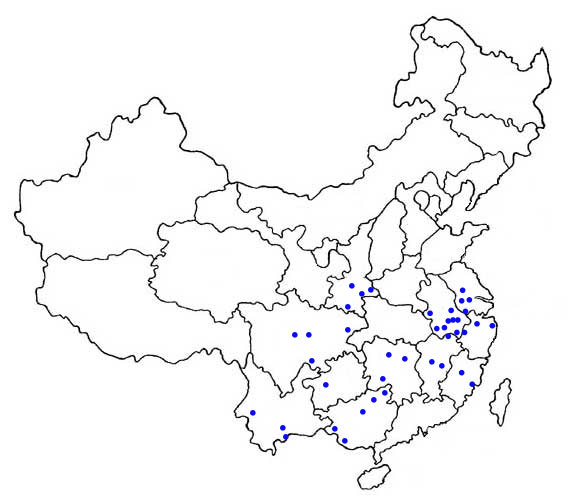
Habitat
· Little known.
Roost sites and roosting behaviour
· Caves are the typical diurnal roosts,a nd may contain hundreds or thousands of bats.
· This species often shares their roosts with other bat species. A large roost shared with H. armiger was found in Sichuan.
Emergence and flight pattern
· Most hipposiderid bats have wing shapes that make them adept at foraging in cluttered environments.
Foraging behaviour
· Little known
Echolocation calls
The echolocation call is a short constant frequency signal, with a brief frequency-modulated start and tail.
To listen to the call of the great leaf-nosed bat click here
Size of sound file: 164 kb
Frequencies of most energy between 59.2 - 62.5 kHz, i.e. lower than H. armiger.
Status and protection
· There is no estimation of population size in China.
· Pratt's roundleaf bats are LR/nt, assessed by the Red List of Threatened Species (IUCN, 2006) and are not listed in the Law of the People's Republic of China on the Protection of Wildlife in 1989.
· Caves and old buildings should be protected as their habitats.
